
The Great Famine, also known as the Great Hunger, the Famine and the Irish Potato Famine, was a period of starvation and disease in Ireland lasting from 1845 to 1852 that constituted a historical social crisis and subsequently had a major impact on Irish society and history as a whole. The most severely affected areas were in the western and southern parts of Ireland—where the Irish language was dominant—and hence the period was contemporaneously known in Irish as an Drochshaol, which literally translates to "the bad life" and loosely translates to "the hard times". The worst year of the famine was 1847, which became known as "Black '47". During the Great Hunger, roughly 1 million people died and more than 1 million more fled the country, causing the country's population to fall by 20–25% between 1841 and 1871. Between 1845 and 1855, at least 2.1 million people left Ireland, primarily on packet ships but also on steamboats and barques—one of the greatest exoduses from a single island in history.
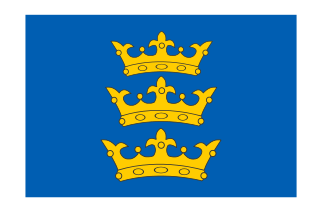
The Lordship of Ireland, sometimes referred to retrospectively as Anglo-Norman Ireland, was the part of Ireland ruled by the King of England and controlled by loyal Anglo-Norman Lords between 1177 and 1542. The lordship was created following the Anglo-Norman invasion of Ireland in 1169–1171. It was a papal fief, granted to the Plantagenet kings of England by the Holy See, via Laudabiliter. As the Lord of Ireland was also the King of England, he was represented locally by a governor, variously known as the Justiciar, Lieutenant, Lord Lieutenant or Lord Deputy.
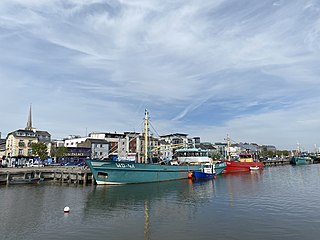
Wexford is the county town of County Wexford, Ireland. Wexford lies on the south side of Wexford Harbour, the estuary of the River Slaney near the southeastern corner of the island of Ireland. The town is linked to Dublin by the M11/N11 National Primary Route; and to Rosslare Europort, Cork and Waterford by the N25. The national rail network connects it to Dublin and Rosslare Europort. It had a population of 21,524 according to the 2022 census.

Yola, more commonly and historically the Forth and Bargy dialect, was a dialect of the Middle English language once spoken in the baronies of Forth and Bargy in County Wexford, Ireland. As such, it was probably similar to the Fingallian dialect of the Fingal area. Both became functionally extinct in the 19th century when they were replaced by modern Hiberno-English. The word "yola" means "old" in the dialect.
Fingallian or the Fingal dialect is an extinct language formerly spoken in Fingal, Ireland. It is thought to have been an offshoot of Middle English, which was brought to Ireland during the Norman invasion, and was extinct by the mid-19th century. Although little is known of Fingallian, it is thought to have been similar to the Forth and Bargy dialect of County Wexford.
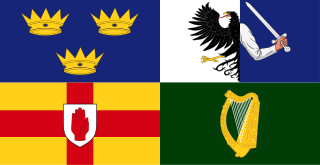
There are a number of languages used in Ireland. Since the late 18th century, English has been the predominant first language, displacing Irish. A large minority claims some ability to use Irish, and it is the first language for a small percentage of the population.

Kilmore or Killmore, locally pronounced 'Kilmoor', is a village and townland in south County Wexford, Ireland, about 16 kilometres (9.9 mi) from Wexford town.

Duncormick or Duncormac is a rural village and surrounding community located in County Wexford, Ireland. At the time of the 2016 census, the village of Duncormick had a population of 116 people. The village is 18 kilometres (11 mi) south-west of Wexford town, close to the fishing village of Kilmore Quay which is one of the largest fishing harbours in Ireland. 'Duncormick' is sometimes used to refer not only to a village, but also to the rural area surrounding it.

Bargy is a barony in County Wexford, Ireland. From the 12th century Bargy and the surrounding area, including the barony of Forth, saw extensive Anglo-Norman settlement following the Norman invasion of Ireland. A distinctive Anglic language, known as the Yola language or simply Yola, was spoken in this area into the 20th century.
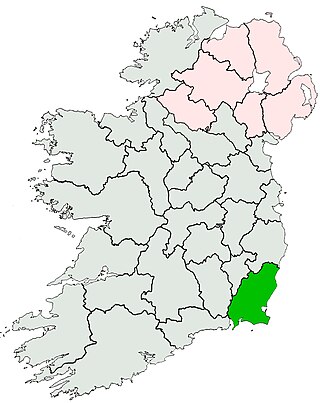
County Wexford is a county located in the south-east of Ireland, in the province of Leinster. It takes its name from the principal town, Wexford, named 'Waesfjord' by the Vikings – meaning 'inlet (fjord) of the mud-flats' in the Old Norse language. In pre-Norman times it was part of the Kingdom of Uí Cheinnselaig, with its capital at Ferns.

Irish, also known as Irish Gaelic or simply Gaelic, is a Goidelic language of the Insular Celtic branch of the Celtic language group, which is a part of the Indo-European language family. Irish is indigenous to the island of Ireland and was the population's first language until the 19th century, when English gradually became dominant, particularly in the last decades of the century. Today, Irish is still commonly spoken as a first language in Ireland's Gaeltacht regions, in which 2% of Ireland's population lived in 2022.

The chronology of the Great Famine documents a period of Irish history between 29 November 1845 and 1852 during which time the population of Ireland was reduced by 20 to 25 percent. The proximate cause was famine resulting from a potato disease commonly known as late blight. Although blight ravaged potato crops throughout Europe during the 1840s, the impact and human cost in Ireland – where a third of the population was entirely dependent on the potato for food but which also produced an abundance of other food – was exacerbated by a host of political, social and economic factors which remain the subject of historical debate.
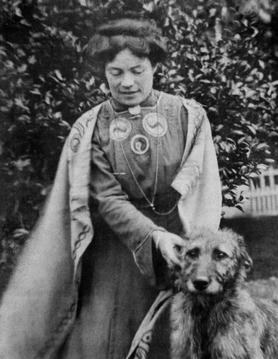
Kathleen Anne Browne was an Irish politician, farmer, writer, historian and archaeologist. She was arrested after the Easter Rising and held in Kilmainham Gaol. During the Civil War, she was Pro-Treaty and joined Cumann na nGaedheal. She was a member of Seanad Éireann from 1929 to 1936. She was a fluent speaker of Yola, an Anglic language of Wexford.

Bargy Castle is a Norman fortress near the village of Tomhaggard in the Barony of Bargy, County Wexford, Ireland, some 12 kilometres (7.5 mi) south-west of Wexford town. The name Bargy derives from Ui Bhairrche, the name of a local tribe.

Forth is a barony in County Wexford in Ireland.
Diarmaid Ó Muirithe was an Irish lexicographer, journalist and author.
Irish Anglo-Norman or Irish Anglo-Normans may refer to:
Jacob Poole was an Irish antiquarian.













